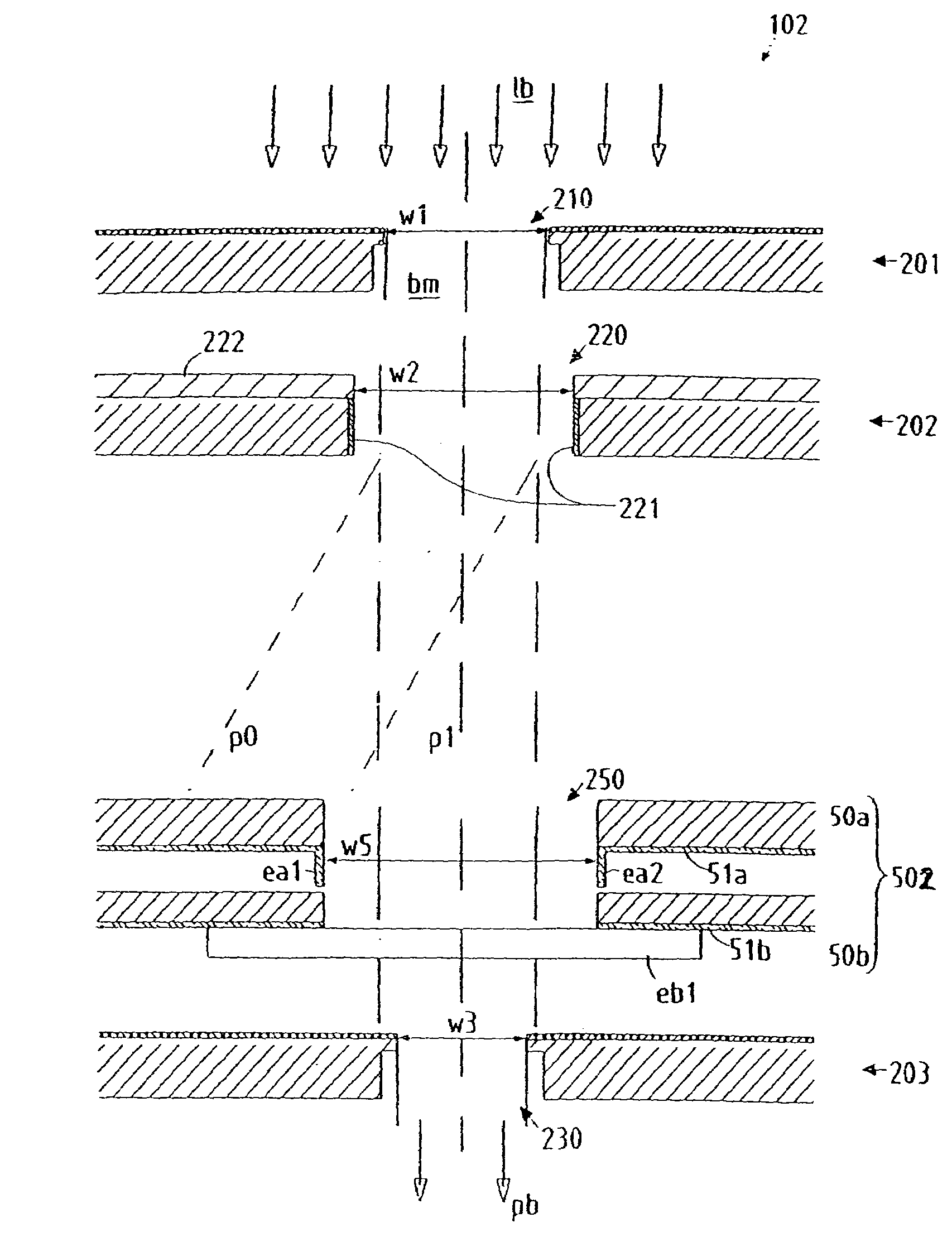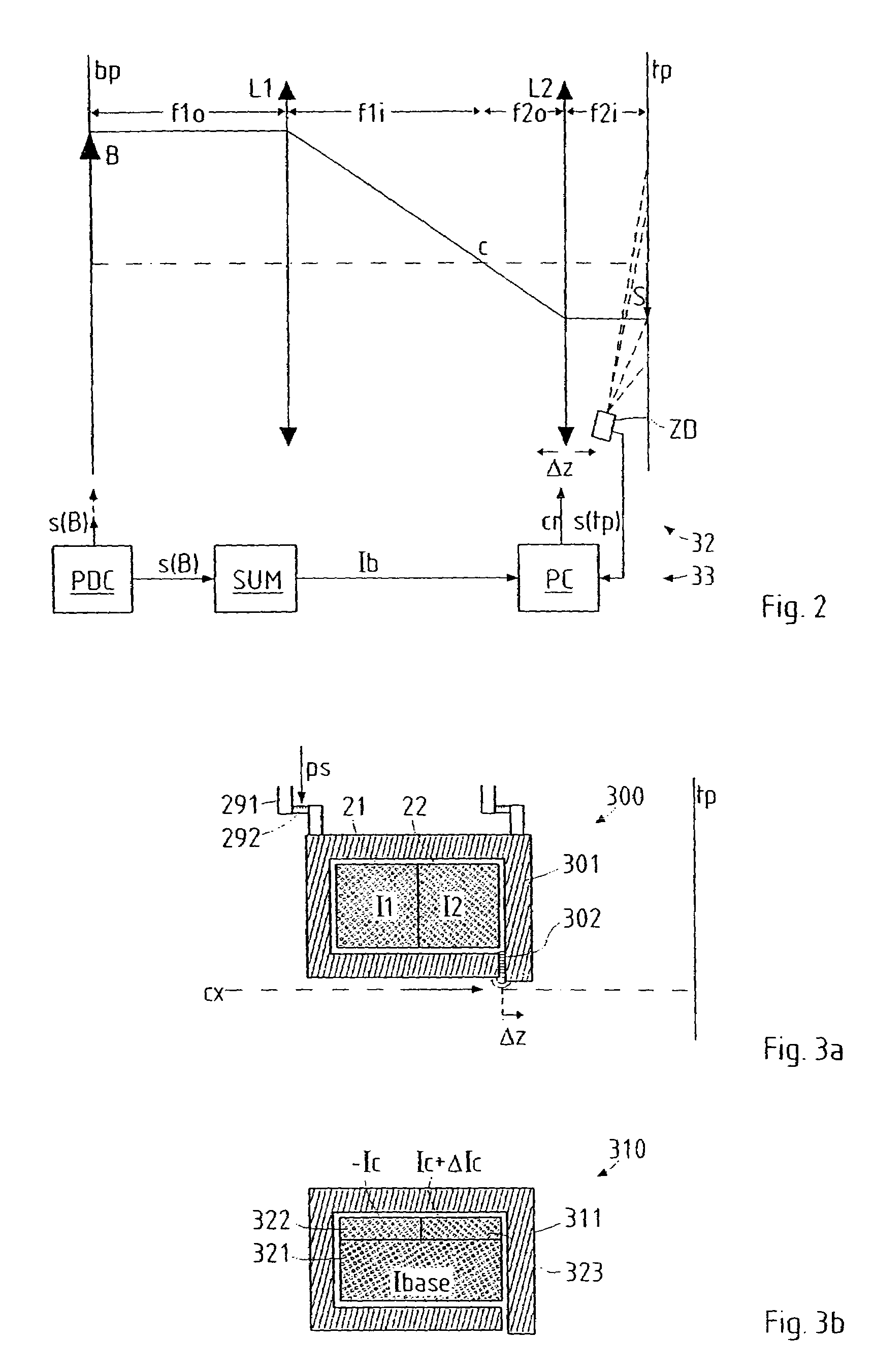Particle-optical projection system
a technology of optical projection and particle optics, applied in electrical appliances, nanotechnology, nanotechnology, etc., can solve the problems of reducing the image blur, and reducing the image quality of the image, so as to achieve the effect of minimizing the image distortion
- Summary
- Abstract
- Description
- Claims
- Application Information
AI Technical Summary
Benefits of technology
Problems solved by technology
Method used
Image
Examples
Embodiment Construction
[0046]The preferred embodiments of the invention discussed in the following are suitable for use in the PLM2 apparatus mentioned above which has a two-stage demagnifying projection optical system after the pattern definition device which produces the patterned beam. FIG. 1 shows a schematic overview of the PLM2 apparatus inasmuch as needed for the disclosure of the present invention. For further details about the PLM2 system, the reader is referred to the US-2003-0155534-A1.
[0047]In the following, with reference to FIG. 1 (which was taken, with modifications where appropriate, from the US-2003-0155534-A1) we first discuss the technical background of the PLM2 apparatus and the Pattern Device (PD) device it contains, as far as relevant to the invention. It should be appreciated that the invention is not restricted to the embodiment discussed in the following, which merely represents one of the possible implementations of the invention.
[0048]An overview of a lithographic apparatus empl...
PUM
| Property | Measurement | Unit |
|---|---|---|
| depth | aaaaa | aaaaa |
| distance | aaaaa | aaaaa |
| optical | aaaaa | aaaaa |
Abstract
Description
Claims
Application Information
 Login to View More
Login to View More - R&D
- Intellectual Property
- Life Sciences
- Materials
- Tech Scout
- Unparalleled Data Quality
- Higher Quality Content
- 60% Fewer Hallucinations
Browse by: Latest US Patents, China's latest patents, Technical Efficacy Thesaurus, Application Domain, Technology Topic, Popular Technical Reports.
© 2025 PatSnap. All rights reserved.Legal|Privacy policy|Modern Slavery Act Transparency Statement|Sitemap|About US| Contact US: help@patsnap.com



